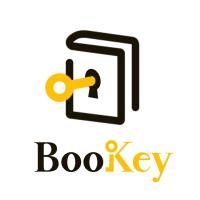Letzte Episode
Overcoming Anxiety and Phobias: A Comprehensive Guide to Healing and Empowerment
12. März 2024
Nächste EpisodeChapter 1:Summary of The Anxiety and Phobia Workbook Full Book
"The Anxiety and Phobia Workbook" by Dr. Edmund J. Bourne is a comprehensive guide for individuals struggling with anxiety and phobias. The book covers a wide range of topics related to anxiety disorders, including different types of anxiety, common causes, and treatment options.
The first section of the book focuses on understanding anxiety and phobias. It explains the underlying causes of anxiety, such as genetics, brain chemistry, and life experiences. Dr. Bourne also discusses the different types of anxiety disorders, including generalized anxiety disorder, panic disorder, social anxiety disorder, and specific phobias.
The second section dives into various techniques and strategies to manage anxiety. Dr. Bourne incorporates cognitive-behavioral therapy (CBT) techniques throughout the book, emphasizing the importance of changing negative thought patterns and learning healthier coping mechanisms. The workbook format provides readers with practical exercises, worksheets, and self-assessments to apply these techniques in their daily lives.
The third section covers various treatment options for anxiety disorders. Dr. Bourne outlines medication options, therapy approaches, alternative treatments, and self-help strategies. This section helps readers understand the different treatment paths they can explore, depending on their individual needs and preferences.
Additionally, the book addresses specific phobias and how to overcome them. Dr. Bourne provides step-by-step instructions on exposure therapy, a proven method for reducing phobic reactions. He includes detailed exercises and scenarios to help readers confront their fears gradually.
Overall, "The Anxiety and Phobia Workbook" by Dr. Edmund J. Bourne is a comprehensive resource for individuals facing anxiety disorders and phobias. It combines educational information, practical exercises, and effective treatment strategies to help readers understand and overcome their anxiety.
Chapter 2:the meaning of The Anxiety and Phobia Workbook Full Book
"The Anxiety and Phobia Workbook" by Dr. Edmund J. Bourne is a self-help book that provides practical techniques and strategies for managing and overcoming anxiety disorders and phobias. The book is designed to help individuals understand the causes and symptoms of anxiety and phobias, identify and challenge negative thoughts and beliefs, and learn effective coping skills to reduce anxiety and regain control over their lives.
Dr. Bourne discusses various anxiety disorders, including generalized anxiety disorder (GAD), panic disorder, social anxiety disorder, and specific phobias. He explains the psychological and physiological aspects of anxiety and provides insights into the cycle of anxiety and how it affects different areas of life such as relationships, work, and overall well-being.
The book includes practical exercises, worksheets, and self-assessment tools to help readers identify their specific anxiety triggers and develop personalized coping strategies. The techniques outlined in the workbook incorporate cognitive-behavioral therapy (CBT), mindfulness exercises, relaxation techniques, and exposure therapy, all of which are evidence-based approaches widely used in treating anxiety and phobias.
By working through the exercises and implementing the suggested strategies, readers can gain a better understanding of their anxiety or phobia, learn effective ways to manage their fears, and gradually overcome their anxieties and phobias. Dr. Bourne emphasizes the importance of seeking professional help if needed but also empowers readers by providing them with valuable information and tools to take control of their anxiety and lead a more fulfilling life.
Overall, "The Anxiety and Phobia Workbook" is a comprehensive guide for individuals struggling with anxiety disorders and phobias, as well as those looking to gain a better understanding of these conditions. It offers a wealth of information, practical techniques, and step-by-step instructions to help readers overcome their fears and live a happier, more productive life.
Chapter 3:The Anxiety and Phobia Workbook Full Book chapters
Chapter 1: Understanding Anxiety and Phobias
This chapter provides an overview of anxiety disorders and phobias, their causes, symptoms, and different types. It explains how anxiety and phobias can affect daily functioning and offers hope for recovery.
Chapter 2: The Physiology of Anxiety
This chapter explores the biological aspects of anxiety, including the brain chemistry and physical sensations associated with anxiety. It also discusses the fight-or-flight response and its role in anxiety disorders.
Chapter 3: Cognitive-Behavioral Approach to Anxiety
Dr. Bourne introduces the cognitive-behavioral approach to managing anxiety and explains the connection between thoughts, emotions, and behaviors. It provides strategies for challenging negative thoughts and replacing them with more rational ones.
Chapter 4: Relaxation Techniques
This chapter presents various relaxation techniques, such as deep breathing, progressive muscle relaxation, and visualization. It explains how these techniques can help reduce anxiety symptoms and promote calmness.
Chapter 5: Self-Nurturance and Individual Wellness
Dr. Bourne emphasizes the importance of self-care and self-nurturance in managing anxiety. This chapter provides practical tips and strategies for maintaining overall wellness, including exercise, nutrition, sleep hygiene, and self-compassion.
Chapter 6: Cognitive Restructuring
In this chapter, Dr. Bourne delves deeper into cognitive restructuring techniques. It provides step-by-step instructions on identifying and challenging irrational thoughts and beliefs that contribute to anxiety. It also addresses common cognitive distortions.
Chapter 7: Facing Fears: Exposure
This chapter introduces exposure therapy, a behavioral technique used to gradually confront fears and anxieties. It provides guidance on creating an exposure hierarchy and offers strategies for managing anxiety during exposure exercises.
Chapter 8: Medication and Other Physical Treatments
Dr. Bourne discusses medication options for anxiety disorders, including antidepressants and anti-anxiety medications. He also explores alternative physical treatments such as acupuncture, biofeedback, and nutritional supplements.
Chapter 9: Social Anxiety and Shyness
This chapter focuses on social anxiety disorder, explaining its symptoms and effects on social interactions. It provides strategies for managing social anxiety, improving social skills, and building self-esteem.
Chapter 10: Panic Disorder and Agoraphobia
Dr. Bourne explores panic disorder, its symptoms, and the fear of having panic attacks in public places (agoraphobia). The chapter provides information on panic attack management, breathing techniques, and exposure exercises.
Chapter 11: Generalized Anxiety Disorder
This chapter discusses generalized anxiety disorder (GAD), a condition characterized by excessive worry and anxiety. It offers strategies for managing chronic worrying, handling uncertainty, and improving relaxation.
Chapter 12: Obsessive-Compulsive Disorder
Dr. Bourne explains the nature of obsessive-compulsive disorder (OCD) and discusses common obsessions and compulsions. The chapter provides cognitive and behavioral techniques for managing OCD and reducing its impact on daily life.
Chapter 13: Post-Traumatic Stress Disorder
This chapter explores post-traumatic stress disorder (PTSD) and its symptoms. It discusses treatment options, such as cognitive processing therapy and eye movement desensitization and reprocessing (EMDR), and offers self-help strategies for managing PTSD.
Chapter 14: Health Anxiety, Hypochondriasis, and Body Dysmorphic Disorder
Dr. Bourne addresses health anxiety, hypochondriasis, and body dysmorphic disorder. The chapter discusses the impact of these conditions, offers strategies for reducing excessive health concerns, and provides tips for improving body image.
Chapter 15: Phobias: Simple and Complex
This chapter explains different types of phobias and provides step-by-step strategies for overcoming them. It includes information on exposure therapy, desensitization, and cognitive techniques specific to phobias.
Chapter 4: 10 Quotes From The Anxiety and Phobia Workbook Full Book
- "Anxiety is a normal, instinctive response that is designed to keep you safe from harm. However, when anxiety becomes excessive and starts interfering with your daily life, it may be a sign of an anxiety disorder."
- "Understanding the root cause of your anxiety is crucial in helping you overcome it. Often, anxiety disorders stem from a combination of genetic, environmental, and psychological factors."
- "It's important to remember that you are not alone in your struggle with anxiety. Millions of people around the world are dealing with similar challenges, and there is help available."
- "Learning to identify and challenge your negative thought patterns is a key component of anxiety treatment. The way you think directly affects the way you feel, so it's essential to work on shifting your perspective."
- "Avoidance only reinforces anxiety in the long term. Facing your fears and gradually exposing yourself to anxiety-provoking situations is a critical step towards overcoming your phobias."
- "Building a strong support network can make a significant difference in your journey towards anxiety recovery. Seek out friends, family, or support groups who can provide empathy, encouragement, and understanding."
- "Incorporating relaxation techniques such as deep breathing, meditation, or progressive muscle relaxation can help you manage anxiety symptoms more effectively. Practice these techniques regularly to cultivate a sense of calm and relaxation."
- "Taking care of your physical health can have a tremendous impact on your overall mental well-being. Establish a healthy sleep routine, engage in regular exercise, and maintain a balanced diet to optimize your body's resilience to stress."
- "Cognitive-behavioral therapy (CBT) has proven to be highly effective in treating anxiety disorders. This therapeutic approach helps individuals identify and modify negative thought patterns, allowing them to break free from anxiety's grip."
- "Recovery from anxiety is a gradual process, and there may be setbacks along the way. Remember to be patient and kind to yourself. Celebrate each small step forward, and never hesitate to seek help when needed."
- 00:00Kapitel 1
RSS Feed
Spotify
Wähle deinen Podcatcher oder kopiere den Link:
https://meinpodcast.de/bookey-book-summary-and-review/feed

